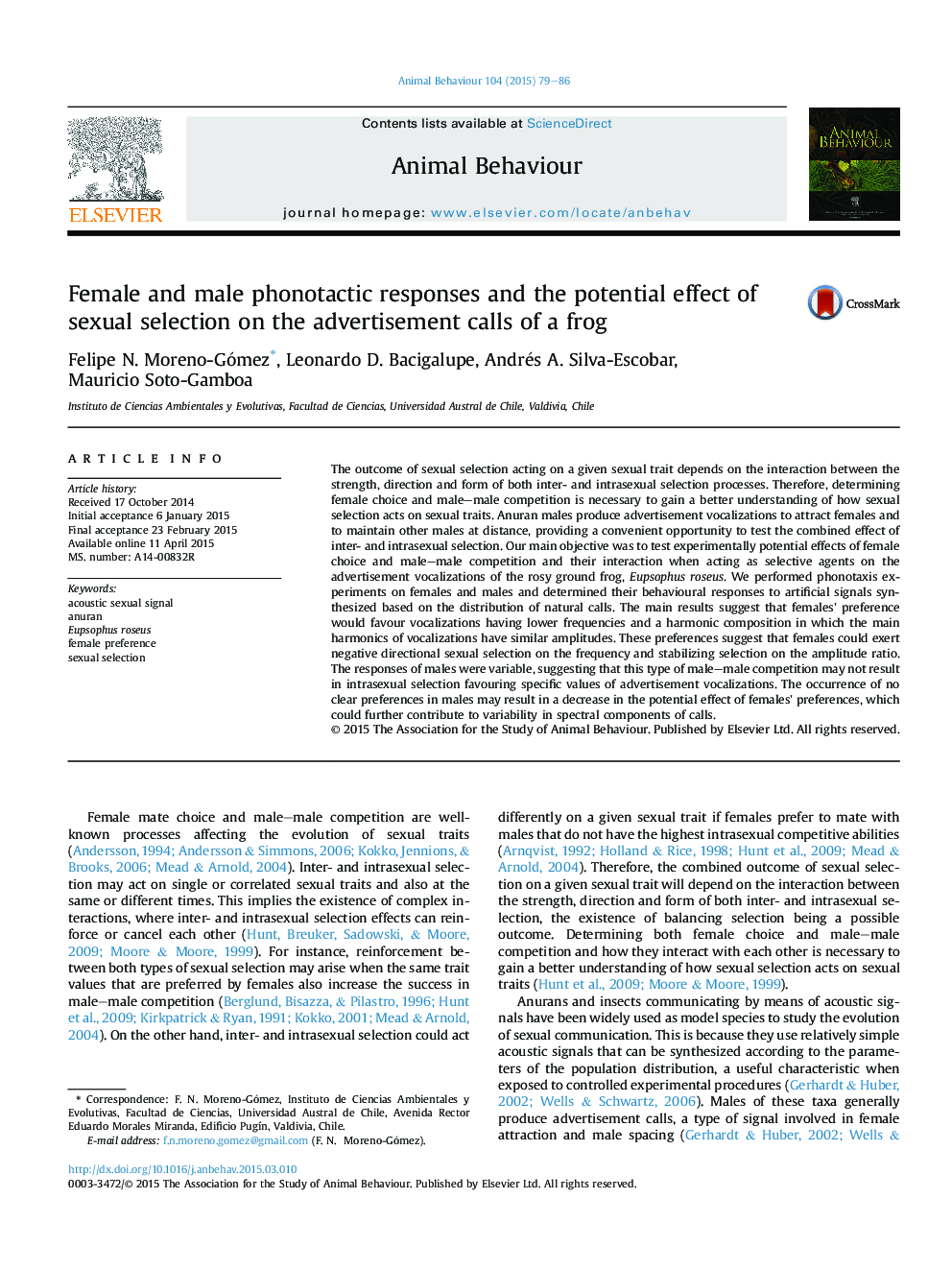| کد مقاله | کد نشریه | سال انتشار | مقاله انگلیسی | نسخه تمام متن |
|---|---|---|---|---|
| 2416295 | 1552224 | 2015 | 8 صفحه PDF | دانلود رایگان |
• We performed phonotaxis experiments on females and males of Eupsophus roseus.
• Females could exert different modes of intersexual selection on advertisement calls.
• The responses of males did not favour any specific value of the calls.
• The response of males may result in a decrease in the effect of females' preference.
• This could help maintain the variability of spectral components of calls.
The outcome of sexual selection acting on a given sexual trait depends on the interaction between the strength, direction and form of both inter- and intrasexual selection processes. Therefore, determining female choice and male–male competition is necessary to gain a better understanding of how sexual selection acts on sexual traits. Anuran males produce advertisement vocalizations to attract females and to maintain other males at distance, providing a convenient opportunity to test the combined effect of inter- and intrasexual selection. Our main objective was to test experimentally potential effects of female choice and male–male competition and their interaction when acting as selective agents on the advertisement vocalizations of the rosy ground frog, Eupsophus roseus. We performed phonotaxis experiments on females and males and determined their behavioural responses to artificial signals synthesized based on the distribution of natural calls. The main results suggest that females' preference would favour vocalizations having lower frequencies and a harmonic composition in which the main harmonics of vocalizations have similar amplitudes. These preferences suggest that females could exert negative directional sexual selection on the frequency and stabilizing selection on the amplitude ratio. The responses of males were variable, suggesting that this type of male–male competition may not result in intrasexual selection favouring specific values of advertisement vocalizations. The occurrence of no clear preferences in males may result in a decrease in the potential effect of females' preferences, which could further contribute to variability in spectral components of calls.
Journal: Animal Behaviour - Volume 104, June 2015, Pages 79–86
